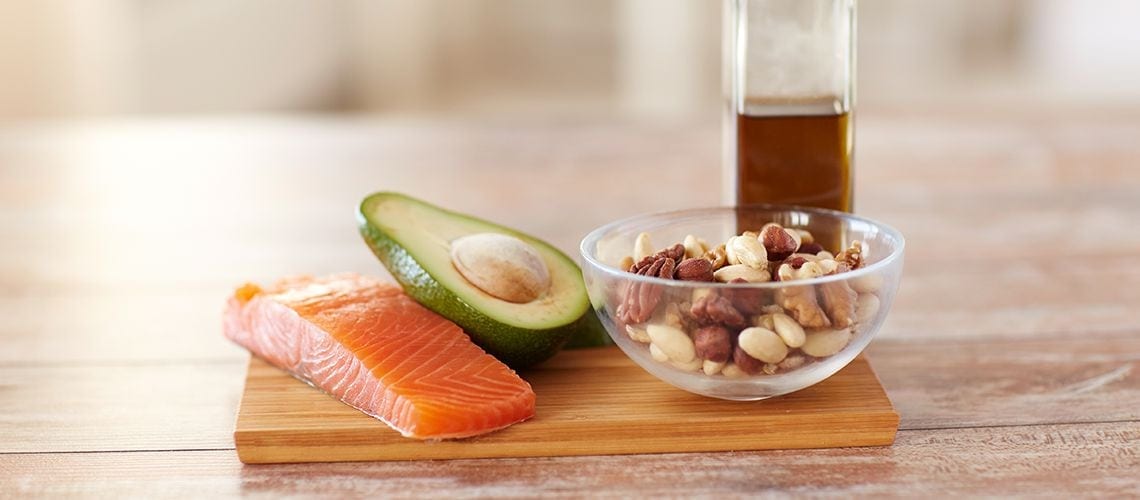Did you know that there are specific hormones in the body that help control appetite? Some hormones are responsible for signaling the body to eat, whereas others tell the body it’s full, or satiated. Research has been exploring how certain foods may reduce hunger or increase fullness by influencing these hormones. These types of studies are relevant because appetite hormones are involved in regulating how much we eat and might ultimately play a role in achieving optimal body weight.
New research published in Nutrition suggests that millennials (ages 18-35) who regularly consume foods that contain polyunsaturated fats (PUFAs), such as walnuts, Alaska salmon, tuna, flaxseed oil, grapeseed oil, canola oil, and fish oil supplements, may experience favorable changes in appetite hormones associated with hunger and satiety.1
In this study, researchers looked at physiological hunger and satiety responses by measuring hormone changes, as well as subjective ratings by asking participants to indicate on a scale how hungry or full they were and how much they thought they could eat. Study participants that consumed a diet high in PUFAs had a significant decrease in fasting ghrelin, a hormone that is proposed to increase hunger, and a significant increase in peptide YY (PYY), a hormone that is purported to increase fullness or satiety. Participants saw increases in PYY while fasting and after consuming a meal. Additionally, there were no changes in the subjective ratings in either the PUFA-rich diet or the control diet.
Researchers enrolled 26 healthy men and women (ages 18-35) who visited the lab for measurements and to receive their meals throughout the study. At the beginning of the study, participants were measured and consumed test meals high in saturated fat. Researchers then placed 16 people on a seven-day diet high in PUFAs and 10 people on a control diet consisting of a typical American eating pattern. The PUFA-rich diet included whole foods including walnuts, Alaska salmon, tuna, flaxseed oil, grapeseed oil, canola oil, and fish oil supplements. All meals were provided by the researchers. After the seven-day diet, participants consumed test meals high in saturated fat, again.
The two diets contained the same number of total calories and percent of calories from fat but differed in the types of fat included. The control diet was comprised of 7% polyunsaturated fat, 15% monounsaturated fat and 13% saturated fat, compared to the PUFA-rich diet which was 21% polyunsaturated fat, 9% monounsaturated fat, and 5% saturated fat.
Walnuts are unique among nuts because they are primarily comprised of PUFAs, with 13 out of 18 grams of total fat per one ounce serving. As a result, walnuts are the only nut to contain a significant amount of plant-based omega-3 ALA (2.5 grams per one ounce). Research on the health benefits of PUFAs continues to evolve and most recently the 2020-2025 Dietary Guidelines for Americans has recommended consuming this type of fat in place of saturated fat.
As with any research study, it is important to consider the limitations. Larger and longer-term studies, as well as studies in diverse populations, are needed to clarify population-wide effects. In the context of a whole food diet, such as the diet used in this study, it is difficult to discern whether changes seen with the PUFA-rich diet can be attributed to one specific type of PUFA, food source, interactions between various hormones, or a combination of factors. More clinical trials are needed to determine the optimal intake of dietary PUFAs that may offer the greatest benefit to appetite hormones and feelings of hunger and fullness.
The flavor and texture of walnuts make them ideal for a variety of dishes. Try walnuts as a plant-based option, a crust for chicken or fish, in hummus, and more.
Sources:
1 Stevenson JL, Paton CM, Cooper JA. Hunger and satiety responses to high-fat meals after high polyunsaturated fat diet: a randomized trial. Nutrition. DOI: http://dx.doi.org/10.1016/j.nut.2017.03.008

